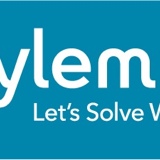Information
-
Site
-
Location
-
Conducted on
-
Type Of Premises
-
Prepared by
1: General Infomation
-
Brief Description of the Premises (Include details such as: Age of building, type of building, use of building. Description of areas of premises, floors etc. and any special risky areas. Size of premises, floor area if known.)
2: Fire Warning Systems within the Premises
-
Fire Warning System Fitted?
-
Emergency Lighting System Fitted?
-
Other: (e.g. Sprinklers)
3: Identified Hazards
-
Hazards
-
Sources of Ignition
-
Source Of Fuel
-
Source Of Oxygen
4: People At Risk
5: Responsible Person for Premises
-
Responsible Person
6: Responsible Staff/ Fire Wardens (include name, job title and location)
-
Fire Safety Manager:
-
Deputy Fire Safety Manager:
-
Fire Marshall's / Wardens :
7: Maintenance Company Details:
-
Fire Alarm Equipment
-
Fire Fighting Equipment
-
Emergency Lighting Equipment
8: Fire Risk Assessment Check List
Fire Hazards And Prevention
-
Is the workplace clean and tidy with combustible waste materials and rubbish routinely placed within designated containers?
-
Are waste and refuse collected regularly and placed in safe and secure receptacles outside and away from the premises?
-
Is the premises designated as smoke-free in accordance with The Smoke-free (Premises and Enforcement) Regulations 2006?
-
Is ‘No Smoking’ signage provided in accordance with the Smoke Free (Signs) Regulations 2012?
-
Do outdoor smoking areas have suitable facilities for the disposal of smoking materials, which are emptied regularly?
-
Have appropriate measures been taken to reduce the risk of arson during occupied hours?
-
Does all upholstered furniture appear to be in good condition and compliant with current safety requirements?
-
Are curtains/ drapes in good condition, fire retardant and kept away from potential ignition sources?
-
Are there proper systems and procedures in place to control work on new buildings and/ or alterations, repairs and decoration of the premises, to an extent that no fire hazards are introduced?
-
If permit to work systems are in place for ‘Hot Work’, are they being operated correctly?
-
Does the building fixed electrical installation appear to be in good order?
-
If the latest inspection shows work is necessary to make systems and equipment safe has this been carried out?
-
Is flexible electrical cable used safely (e.g. use kept to a minimum and only short lengths of uncoiled cable used)?
-
Are electrical sockets used correctly and not apparently overloaded?
-
Do all portable/ transportable electrical appliances appear to be in good condition?
-
Is electrical equipment (e.g. light bulbs/ fittings and any electrical heating appliances) kept well away from combustible materials?
-
Prior to leaving the premises, are all rooms and areas inspected to check for fire risks and that appropriate electrical appliances have been switched off?
-
Do all heating appliances appear safe (e.g. securely fixed in position, suitably guarded, and with an adequate clear space free of storage of any kind)?
-
Do all cooking appliances appear safe e.g. securely fixed in position, properly maintained and used only for their originally intended purpose?
-
Are relevant arrangements for liquid/ gaseous fuel supplies for heating and cooking equipment adequate (e.g. easily accessible with well-marked shut-off valves)?
-
Are employees working in high risk areas (e.g. areas where ‘hot’ processes or flammable or combustible liquids/ gases are used) aware of the risks and the safety procedures to adopt?
-
Where there is a process, operations, storage or transportation of a substance that produces potentially explosive/ flammable atmospheres, is an assessment under the Dangerous Substances and Explosive Atmospheres Regulations 2002 (DSEAR) available?
-
Do the premises appear free of horizontal or vertical unprotected openings that will allow the spread of fire (integrity of fire separation and compartmentation)?
People at Risk
-
Do the fire safety arrangements take into account the needs of all those persons, including contractors, who work or visit the premises?
-
Do the fire safety arrangements take into account the needs of all those persons who may elsewhere in the building or in the vicinity of the premises?
-
Do the fire safety arrangements take into account the needs of all those person especially those at risk, in particular:
-
Disabled persons?
-
Lone Workers?
-
Young Workers?
-
Pregnant Workers?
-
Persons working in high risk areas including those storing or using dangerous substances?
Fire Detection and Alarm Systems
-
Is there suitable means for raising the fire alarm warning?
-
Is the system audible throughout the premises?
-
Can the alarm be raised without putting anyone in danger?
-
Is there an automatic fire detection and warning system fitted, where necessary?
-
Are there sufficient and suitable fire alarm call points located within the premises?
-
Are all alarm call points unobstructed and clearly visible, including provision of suitable signage where required?
-
Are detectors of the correct type provided where necessary for life safety purposes and linked to the premises alarm system?
-
Are detectors unobstructed?
-
Are sufficient sounders provided to give warning in accordance with current guidance?
-
Is there only one sound for the fire alarm system that cannot be confused with any other alarm (i.e. security alarm)?
-
Are all sounders unobstructed?
-
Is the alarm panel conveniently located for Fire Service access in the event of an emergency?
-
If the alarm system is divided into zones, is there a corresponding plan adjacent to the alarm panel?
-
Is the alarm linked with adjacent premises (where necessary)?
-
Are persons within the premises familiar with the basic operation of the alarm panel?
-
Is the system linked to the fire service by a monitoring system where necessary?
Fire-Fighting
-
Is there an adequate provision of portable fire extinguishers, which are suitable types for the fire risks where they are positioned?
-
Are all portable fire extinguishers and fire blankets suitably located and available for immediate use (not obstructed or hidden)?
-
Are all fire extinguishers suitably wall-mounted (or on a suitable stand) and with identity signs displayed?
-
Are fire extinguishers that are not at clearly visible locations indicated by supplementary signage?
-
Are sprinkler heads/ pipes clear of any coverings, attachments or obstructions within 0.5 meters below the deflector plate or 1 meter in high risk areas?
-
When a dry or wet rising main is installed in the building, are the outlet valves strapped and secured in the closed position or located within a secure cabinet accessible with a Fire Service compatible lock?
Escape Facilities (exit doors, exit routes, signage and lighting)
-
Are travel distances considered to be acceptable?
-
Are all escape routes and fire exits free from obstruction?
-
Are floor and stairway surfaces in adequate condition and free from any tripping and slipping hazards (including any external stairs and paths)?
-
Are all ‘Protected Routes’ free from combustibles and other fire related hazards?
-
Are fire exits sufficient (i.e. a sufficient number of sufficient width) to enable the people present in any and all areas to evacuate safely?
-
Do all fire resistant constructions within protected routes appear in good condition (e.g. with any openings for pipes, cable ducts, etc. being properly protected by the provision of fire resisting materials or fire dampers)?
-
Are there areas covered by entertainment or drinks licences? If ‘yes’ list the areas and licensed uses and state the maximum number of people allowed taking into account permitted density and available escape provisions.<br>(Note: If a licence is in place the Licensing Authority must be informed before any alterations take place)
-
Do all doors on escape routes open in the direction of travel where necessary?
-
Are fire-resisting doors where required to be self-closing, fitted with fully operating self-closing devices with the doors closing fully onto rebates?
-
Are all final exits and intermediate doors easily operable from the inside without the use of a key?
-
Do all final exits lead to a place of safety?
-
Are fire-resisting doors in good condition, e.g. smoke seals, intumescent strips, etc.?
-
Are appropriate notices and signs for fire resisting doors provided (e.g. ‘Fire Door - Keep Shut’ or ‘Fire door - Keep Locked’)?
-
Are appropriate ‘pictogram’ exit notices provided on all fire exit doors and routes where required?
-
Do all ‘Panic Bar’ fire exit doors have suitably positioned ‘Push Bar to Open’ signs, where required?
-
Are all securing devices, other than normal door handles, on doors forming part of an escape route suitably signed as to the method of release?
-
Are all escape routes provided with adequate artificial lighting at all relevant times of the day and night?
-
Is adequate emergency lighting provided for both the internal and external escape routes and does it appear fully serviceable?
-
Are suitable arrangements in place for evacuating people with disabilities or special needs?
-
Are Personal Emergency Evacuation Plans (PEEPs) or a range of standard PEEPs for persons having ‘Special Needs’, i.e. sensory or mobility impaired employees or visitors (including the general public) available in the event of serious or imminent danger from fire?
-
Do external fire escape routes, i.e. pre-fabricated metal stairways, receive a regular visual check for hazards, lighting, fire exit signs and an inspection of structural integrity by a ‘Competent Person’ on a three-yearly basis?
-
Are the premises or site free from any other hazards that would have an adverse effect upon means of escape in the event of fire?
Fire Emergency Plan
-
Are there clearly defined written fire action and emergency evacuation procedures, including provision for roll calls?
-
Are all employees/ others fully aware of these procedures and their own particular duties and responsibilities in the event of an evacuation?
-
Are suitable ‘Fire Action’ notices prominently displayed around the premises and filled in correctly?
-
Have appropriate persons been instructed to summon the fire brigade?
-
Are there sufficient fire wardens available to provide for all working hours (including lunch and tea breaks) taking into account holidays and sick leave?
-
Have appropriate arrangements been made for dealing with those who are not normally on the premises (e.g. visitors and contractors)?
-
Are fire evacuation assembly areas in safe locations, clear of the building and away from fire brigade vehicle access and parking?
-
If necessary, are there alterative evacuation areas available in the event that the nominated ones are not available?
Instruction and Training
-
Have all relevant persons been informed of the ‘Significant Findings’ of the fire risk assessment?
-
Is there a suitable organisation fire policy in place?
-
Have all staff been informed of the organisations fire policy?
-
Have all staff been trained in procedures to follow in case of fire?
-
Have all staff been trained in basic Fire Awareness and Fire Prevention?
-
Have relevant staff been trained in Fire Extinguishers – Selection and Safe Use?
-
Have relevant staff been trained as Fire Warden/ Marshal?
-
Have relevant managers been trained in Fire Risk Assessment?
-
Have relevant managers been trained in Fire Safety Management?
-
Have all those having a responsibility under the Fire Emergency plan been trained in their role?
-
Are written records available detailing the scope of training, who has been trained and by whom?
-
Are the fire training and adequacy of the fire emergency plan tested by regular evacuation drills?
Maintenance and testing (Is there evidence of regular checks and maintenance for the following in accordance with accepted standards?)
-
Fire detection and alarm systems?
-
Are records maintained relating to false alarm occurrences?
-
Are false alarms investigated to avoid re-occurrence?
-
Are numbers of false alarms currently within generally acceptable limits?
-
Emergency lighting systems?
-
Who Looks after this system
-
Fire extinguishers?
-
Who Looks after this system
-
Escape Routes (internal and external)?
-
Fire Doors and Fire Exits?
-
Hose reels?
-
Automatic closing doors, shutters, fire dampers etc.?
-
Automatic sprinkler systems?
-
Other fixed suppression systems installed?
-
Smoke and smoke/ heat control systems?
-
Emergency generators forming part of an escape lighting system?
-
Evacuation and fire-fighting lifts?
-
Wet and dry rising fire mains?
-
Kitchen extract systems?
-
Gas Supply and associated equipment?
-
Electrical installation?
-
Portable electrical equipment?
Asset Protection (Business, Property and Environmental)
-
Are there suitable arrangements for detecting fire outside of normal working hours?
-
Are automatic fire fighting arrangements considered suitable and sufficient in the circumstances?
-
Do all fire/ smoke barriers appear in good condition (e.g. with any openings for pipes, ducts etc. properly protected by provision of fire-resisting materials or fire dampers)?
-
If the premises are not staffed 24/7 are arrangements in place to connect to automatic fire alarms to a receiver station?
-
Have appropriate measures been taken to reduce the risk of arson when the premises are not occupied? (PIR floodlights, CCTV, secure fencing, waste clearance, etc.)?
-
Is there adequate access to the site and all buildings to enable fire brigade vehicles to get close enough for fire-fighting?
-
Are all fire hydrants in the vicinity clearly indicated and accessible?
-
Is the fire brigade familiar with any significant risks associated with the premises and is an emergency services information pack maintained available?
-
Are important documents kept in fire proof cabinets?
-
Are important computer records backed up and kept off site or in a remote fire separated location?
Dangerous Substances and Explosive Atmospheres Regulations 2002 (DSEAR)
-
Where there is a process, operations, storage or transportation of a substance that produces potentially explosive/ flammable atmospheres, has a DSEAR risk assessment been undertaken?
-
Does the assessment seem to be suitable and sufficient and have all actions been addressed?
-
Are there relevant warning signs on display?
-
Have zones been set up where appropriate?
-
Is there adequate control over flammable substances and explosive materials been put into place?
-
Are only limited amounts of substances stored in the work areas?
-
Have appropriate equipment and protective systems been provided where explosive atmospheres may be present?
-
Have appropriate emergency procedures been put into place?
-
Are pipes and containers that contain dangerous substances been appropriately marked?
-
Conclusions
-
Premises Risk Level Based on the details observed and contained within this report the premises is considered to have the following risk rating –













